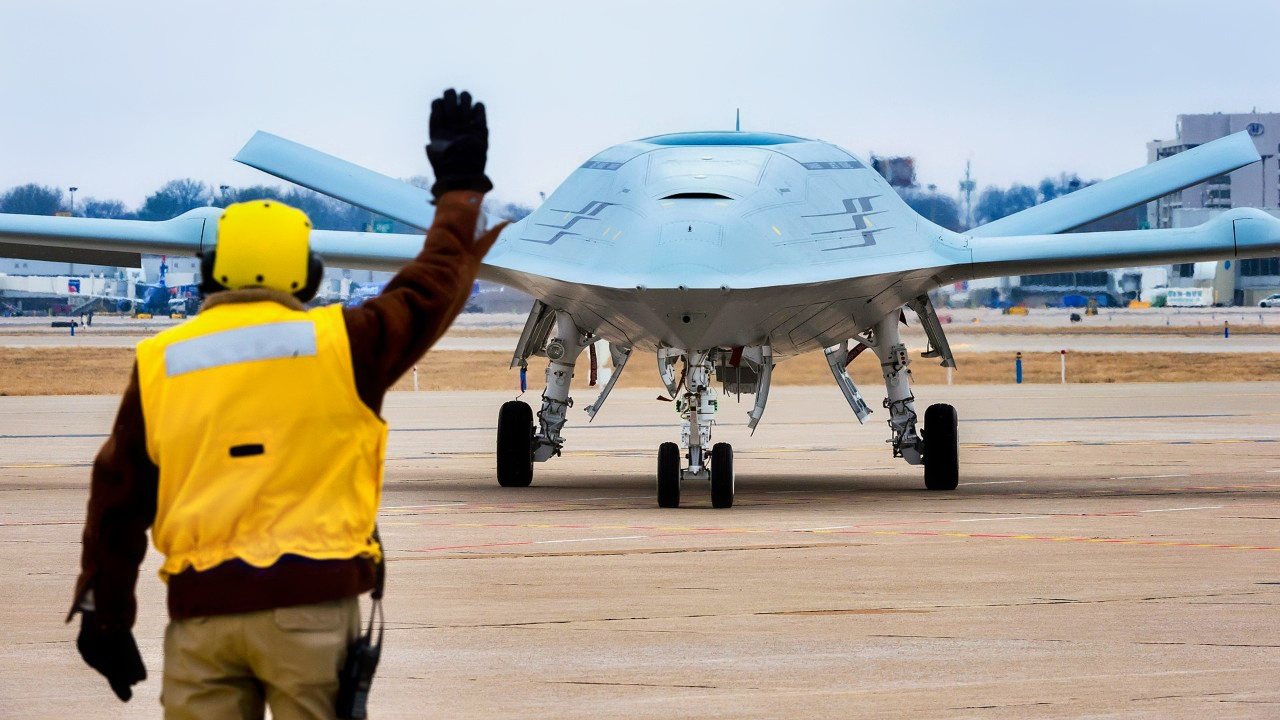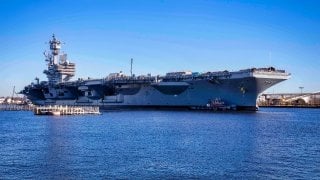The U.S. Navy's 'Drone' Aircraft Carrier Future
The relevance of manned aircraft is gradually diminishing as drone technology advances. A significant step forward occurred on the USS George H.W. Bush, where the world's first air drone warfare control room was installed in this aircraft carrier.
Summary and Key Points: The relevance of manned aircraft is gradually diminishing as drone technology advances. A significant step forward occurred on the USS George H.W. Bush, where the world's first air drone warfare control room was installed in this aircraft carrier.
-This facility will soon host operators of the MQ-25 Stingray, a refueling drone designed to extend the range of U.S. Navy fighter jets like the F/A-18 Super Hornet and F-35C. The control room is a key development in integrating drones into carrier operations, with similar facilities planned for other carriers.
-The MQ-25 represents just the beginning, with future drones likely to take on even more critical roles.
USS George H.W. Bush: Home to the World’s First Drone Warfare Control Room
The manned aircraft is becoming slightly less relevant, step by step, as drones grow in sophistication. One such step happened recently, aboard the USS George H.W. Bush aircraft carrier, where the world’s first air drone warfare center, or control room, was installed. In the near future, the control room will host operators of the MQ-25 Stingray refueling drone.
“The ground control station was part of a multiyear effort that took place aboard Bush during multiple ship maintenance stints and between deployments, Naval Air Systems Command, or NAVAIR, said,” Navy Times reported.
The control room will consist of software, hardware, and the world’s first operational unmanned carrier aviation mission control system. At-sea tests of the control room are scheduled for early 2025. Once operational, the Navy will be much closer to integrating the Stingray drones into the carrier’s fleet.
The Drones are Coming
The MQ-25 Stingray will be used to refuel fighter jets in the air. According to the Stingray’s manufacturer, the beleaguered Boeing, the refueling drone will extend the combat range of the F/A-18 Super Hornet, EA-18G Growler, and F-35C Lightning II. “The MQ-25 brings the right combination of refueling, autonomy, and seamless carrier deck integration to meet the U.S. Navy’s goals,” Boeing boasted.
Essentially, the MQ-25 will be vital for allowing the Navy’s fighter jets to stay airborne longer – “a capability that would be particularly helpful should war with China break out in the water expanse of the West Pacific,” Navy Times reported.
For propulsion, the MQ-25 relies on one Rolls-Royce AE 3007N turbofan engine, which provides 10,000 pounds of thrust. The 3007N engine is also used in the MQ-4C Triton drone.
The MQ-25 is not stealthy. It does not feature a low-radar-cross-section fuselage design, nor a flush inlet to shield engine blades from radar detection, indicating that the MQ-25 should be used primarily as a refueling drone. Still, the MQ-25 does have two hardpoints under the wings that are able to accommodate the AGM-158C LRASM anti-ship missile.

The MQ-25 measures 51 feet long, with a 75-foot wingspan. The wings can be folded to 31 feet for more compact storage aboard a carrier.
Of course, the MQ-25, which will fill a support role, is likely only a first step. Soon, drones could be filling primary roles. The control room will facilitate further steps along the path to drone integration. The next step may well be the operation of the Collaborative Combat Aircraft (CCA), which is meant to complement the Next Generation Air Dominance (NGAD) sixth-generation fighter. The NGAD program appears to be on pause, which spells uncertainty for the CCA as well, but in all likelihood, the CCA or something like it will be under development in the near future.
Similar control rooms are planned for installation aboard USS Carl Vinson, USS Theodore Roosevelt, and USS Ronald Reagan starting in Fiscal Year 2025.
About the Author: Harrison Kass
Harrison Kass is a defense and national security writer with over 1,000 total pieces on issues involving global affairs. An attorney, pilot, guitarist, and minor pro hockey player, Harrison joined the US Air Force as a Pilot Trainee but was medically discharged. Harrison holds a BA from Lake Forest College, a JD from the University of Oregon, and an MA from New York University. Harrison listens to Dokken.
Image Credit: Creative Commons.


